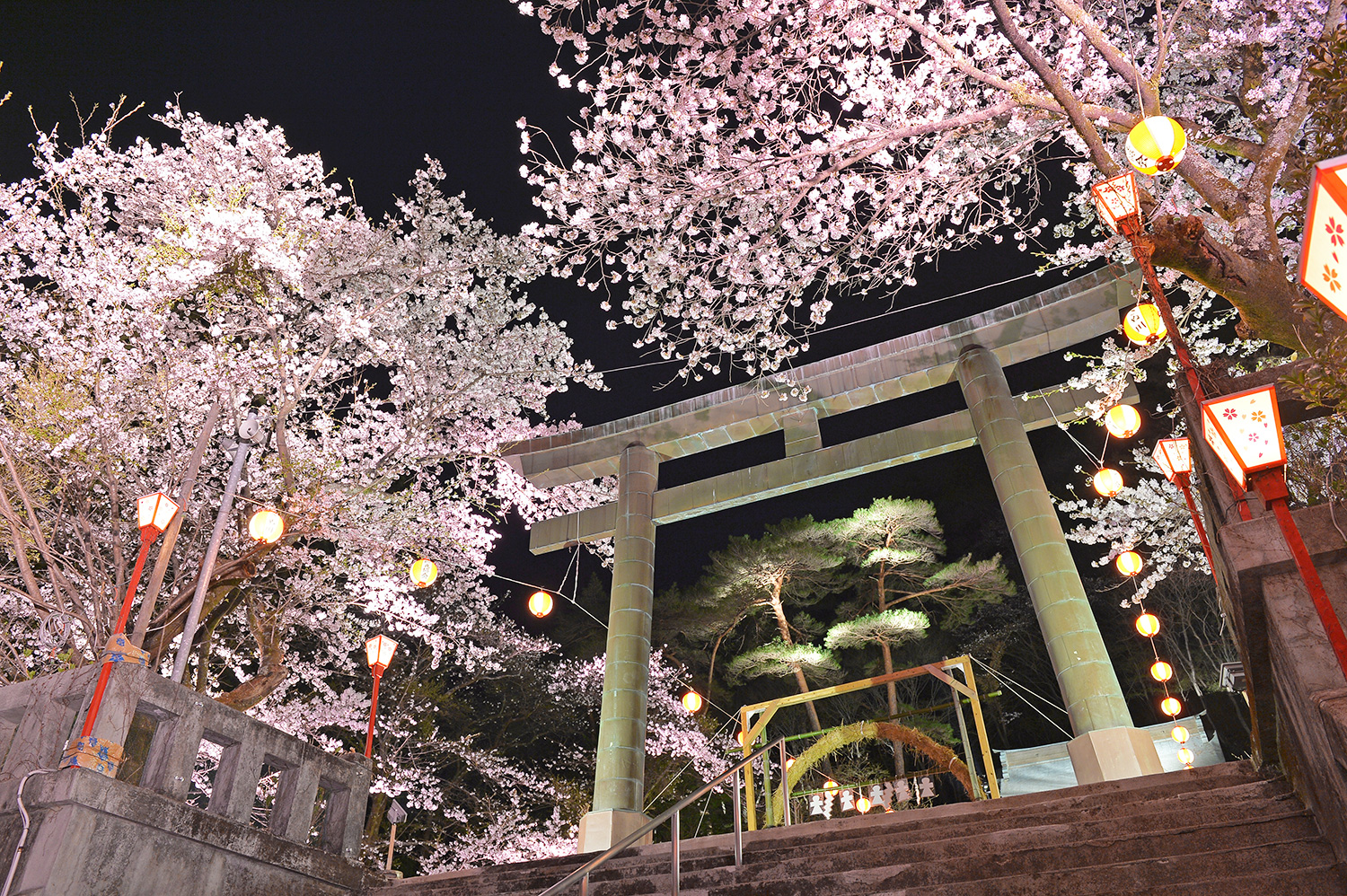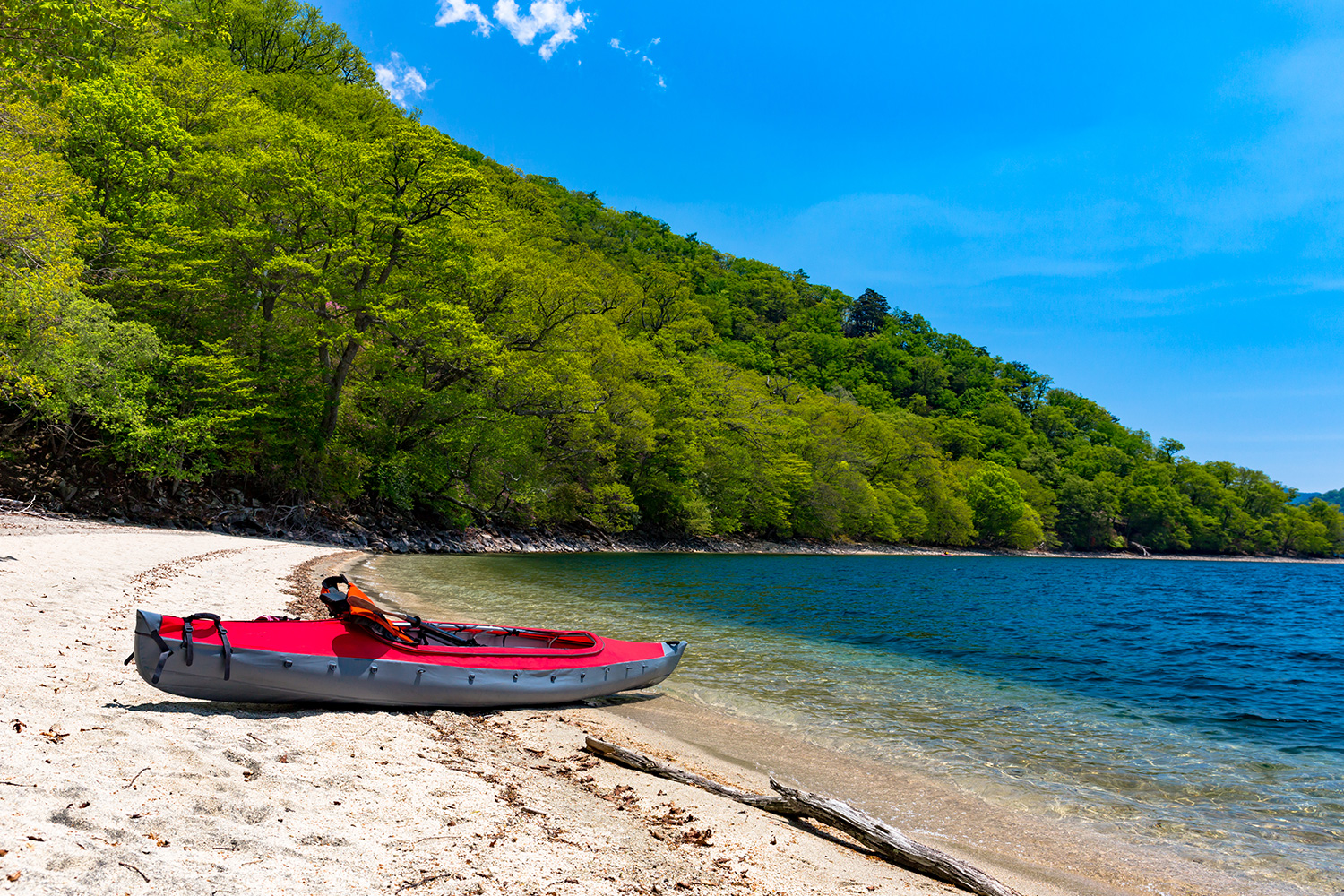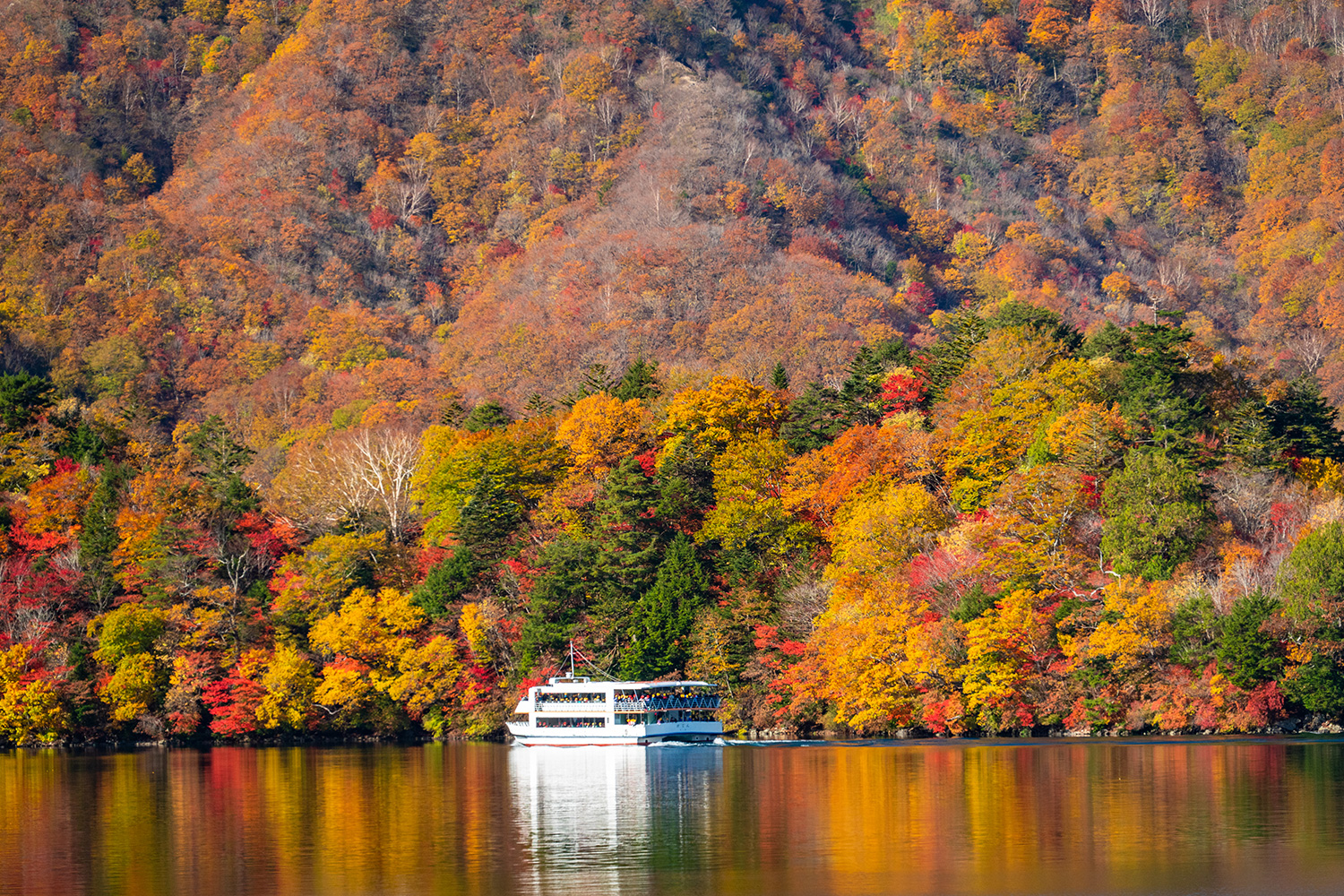First-Time Visitors
History
It’s no wonder that Nikko’s most historic shrines and temples are designated World Heritage sites and National Treasures of Japan. Their striking architecture is in perfect harmony with the surrounding cedar forests and mountain slopes.
The walkable World Heritage area includes two Shinto shrines and one Buddhist temple. Together, they form a complex of over 100 intricately detailed, vermilion-painted structures, connected by paths lined with centuries-old trees and weathered stone lanterns.
These sites are fastidiously preserved by generations of monks, and painstakingly reconstructed using original plans and traditional techniques when damaged. The result is examples of Edo-period (1603-1867) architecture as stunning today as the day they were finished.
Nikko's history goes far beyond just the World Heritage sites. Throughout the region, well-preserved temples and shrines dot the mountainsides as charming compliments to the natural landscape.
Nature
Hike along twisting mountain trails, through ancient cedar forests, around placid lakes and over untamed marshland. Walk until you hear the whisper of rushing water, then follow the sound until the full majesty of one of Nikko’s many waterfalls comes into view. Nikko is part of Nikko National Park, so pristine nature surrounds you wherever you go.
Experience Nikko’s four distinct seasons, each offering its own views and experiences. In springtime, the cherry trees blossom and fields of flowers bloom. Escape from the scorching Japanese summer to Nikko’s rivers and lakes. Autumn is the busiest season, with tourists from across Japan coming to admire the dramatic transformation of the forests from verdant green to vibrant red and gold. Winter brings a covering of snow, best enjoyed on skis and snowboards, or from the warmth of a hot spring bath.
Culture
Most of Nikko is quintessential Japanese countryside—less hectic than the cities, but just as vibrant. Sample sake and soba noodles made from local harvests. Try regional delicacies like yuba, and enjoy produce such as fish, pork, beef, fruits and vegetables. Experience the peaceful simplicity of staying at traditional Japanese ryokan guesthouses and soaking in their private onsen baths. In the summer, Nikko uses its famously pristine water to make a shaved ice treat called kakigori.
Come during one of Nikko’s many seasonal festivals to witness bustling parades, portable shrines carried through town or flower-covered floats celebrating the coming of spring. See the historic shrines come to life during the Autumn Grand Festival, complete with horse-mounted archers and processions of people dressed as samurai. In winter, warm yourself with the sight of hundreds of tiny, candle-lit snow-huts during the Kamakura Festival. For those who want a more hands-on experience, many of these festivals welcome your participation.
At Edo Wonderland, children and adults alike can experience a sprawling theme-park recreation of life during the Edo period (1603-1867). Visit for a taste of what Japan was like hundreds of years ago.
When to visit
Spring
Nikko is an excellent place to enjoy Japan’s famous cherry blossoms, which usually bloom in mid-April. Some of the best viewing spots are Kinugawa Onsen's Gokoku Shrine, at the foot of the Kinugawa Onsen Ropeway, and the Onsen Shrine at the peak. Celebrate springtime with the Yayoi Festival from April 13 to 17, as floats of flowers are paraded through town.
Cherry blossoms aren’t the only incredible flowers in Nikko. Walk the flower-filled fields of the Kisuge-daira highlands in spring to enjoy rhododendrons, mountain cherries and, a bit later in the year, fields of Nikko Kisuge — a yellow flower that blooms in mid-June. On clear days, you can catch a glimpse of Mt. Fuji, making for some of the most beautiful vistas in all of Japan.

Summer
Cooler than Japan’s coastal cities, Nikko is a wonderful place to spend long summer days. Take to the water for canoeing or river rafting in Okunikko. Enjoy views of waterfalls like Ryuzu Falls, whose refreshing spray offers respite from the heat. Catch the Ryuo Festival on the fourth weekend of July, when portable shrines go on parade and fireworks light up the valley.
Cool down with some kakigori, shaved ice with syrup. Some say Nikko’s pure spring water and the use of traditional ice houses yields the country’s best kakigori. Each shop has its own specialty flavor in addition to classics like melon and strawberry.

Autumn
Nikko’s forests are famous for putting on a show in autumn, lighting up with brilliant reds, vivid oranges and golden yellows. Visit the world-famous vermilion-painted temples backdropped with colorful foliage. Walk the Setoaikyo Canyon and cross the soaring wooden suspension bridge for an unparalleled view of the foliage against sheer cliffs. Nikko is most crowded in October, when the leaves are at their peak. Head to Nikko Toshogu Shrine on October 16 and 17 for its Autumn Grand Festival to see horse-mounted archery rituals and a parade of 800 people in samurai garb.

Winter
Winter blankets Nikko in a layer of pristine, white snow. Some of the region’s mountains become ski and snowboard slopes. All the equipment you need is available to rent, and lessons are available for beginners, so it’s easy to enjoy winter sports at any age or skill level.
Venture to the towns of Yumoto Onsen, Chuzenji Onsen, and Yunishigawa Onsen to help build hundreds of miniature snow huts, and see them illuminated by candlelight during the Kamakura Festival.
Bathing in a natural hot spring is the perfect addition to a cold winter day. Japanese even has a word for enjoying a snowy scene from the cozy heat of an onsen: yukimiburo.

How long to spend here
If you’re pressed for time, you can get a taste of Nikko on a day trip. Nikko is easy to get to from Tokyo, and it’s possible to see the core World Heritage sites in a few hours. However, Nikko reveals its true charm to those who explore a little longer.
Take the extra time to immerse yourself in Nikko’s renowned culture and abundant nature — it’s worth it. Arrive early to appreciate the stillness of the temples and shrines before the tour buses arrive. Watch the sunset while soaking in an open-air onsen without concern for catching your return train.
Some of Nikko’s best sights are difficult or impossible to see in a single day. Go beyond the most popular tourist attractions and see Nikko’s less crowded lakes and waterfalls. Hike to isolated viewing spots, like those around Lake Chuzenji, then go fishing or canoeing. Venture into the historic Ashio Copper Mine, trek through Ryuo Gorge and spot wild monkeys on Mt. Nantai. No matter how long you stay in Nikko, there will be plenty to see and do.
Nikko is the perfect place to discover the remarkable hospitality of traditional ryokan inns. They are largely unchanged from the ryokan that visitors to Nikko stayed in hundreds of years ago: minimal yet comfortable, with tatami mats and shoji paper doors, and elaborate multi-course dinners served to your room. If that’s not for you, dozens of familiar Western-style hotels are also available.
Getting to Nikko
Getting to Nikko is very straightforward. Tobu runs direct trains to Nikko from Asakusa Station in Tokyo and co-operates trains from Shinjuku Station. Tobu passes for travel within the region include this journey. Travelers using a Japan Rail Pass can reach Nikko on JR trains, although it isn't the most direct route.
These trains will deposit you at one of central Nikko’s twin train stations, Nikko and Tobu-Nikko. From there, you will have various options for the next leg of your journey.
Highway buses operate from Greater Tokyo's two main airports — Narita and Haneda — as well as Tokyo Station and Yokohama Station. Getting to Nikko from elsewhere in Japan is possible although most routes involve going via Tokyo first.
Getting around Nikko
Getting around Nikko is simple, with various options for every type of traveler.
Buses are the main mode of transport in the region. Frequent buses run a circuit around the World Heritage sites and other popular tourist destinations, while occasional buses run to and between more rural destinations in Okunikko, Kinugawa, Yunishigawa and elsewhere. It may be worth purchasing a travel pass, which allows unlimited use of transport networks. This saves money and makes hop-on-hop-off travel between the sights easier.
For custom routes, taxis are available to book over the phone, in English, from anywhere in Nikko. Similarly, rental cars offer a great way to see Nikko, with convenient rental locations and affordable prices. Driving is particularly useful if you are going to and between remote corners of Nikko.
Travel tips
For further information about visiting, traveling and staying in Nikko, click the links below.
Check the Basic Information page for the average weather and recommended clothing for your visit, where to find currency exchanges and ATMs, and other valuable tips. It also covers the free visitor Wi-Fi, baggage storage and delivery, and emergency information.
Basic Information
Find the answers to questions about sightseeing, getting around, money and credit cards, and more on the FAQ page.
FAQ
Booking accommodation
While some accommodations in Nikko offer same-day booking, it is highly recommended that you book in advance to make sure you get the perfect room.
The majority of accommodation in Nikko can be booked online. For support finding and booking the right accommodation, contact the Nikko Tourist Information Center. Their helpful, English-speaking staff can answer your questions, offer recommendations, and assist you with making reservations. If you arrive in Nikko without a place to stay, head to the center for help in booking that night's accommodation.
